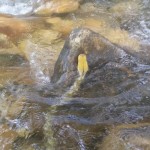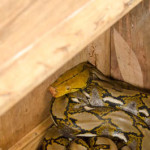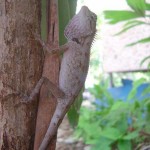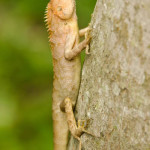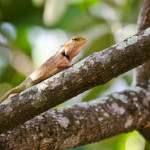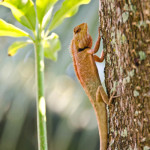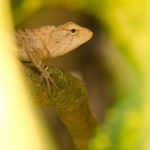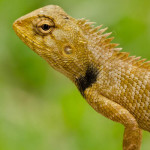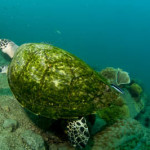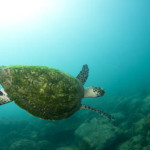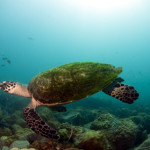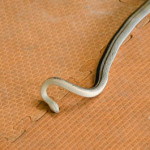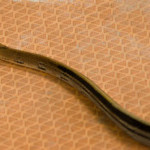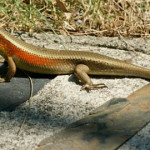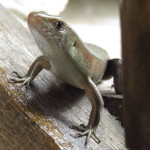Batocera rufomaculata
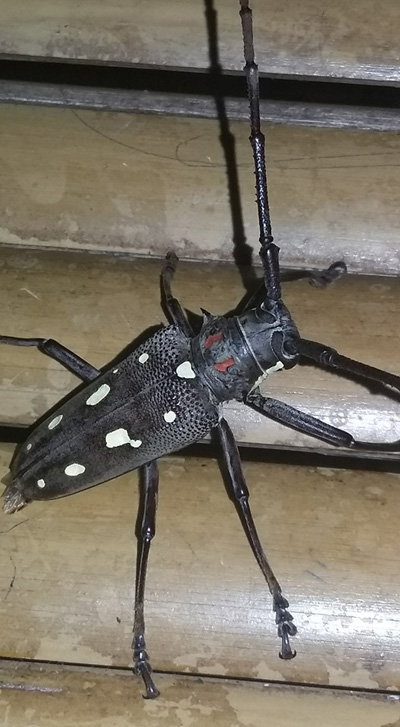
Image Copyright Supotch White
Observed: November 2015
Observed By: Supotch White
Minor controversy surrounds this sighting. It looks like a longhorn beetle but has been identified as its close cousin Batocera rufomaculata. When we get the help of an expert entomologist (hint, hint) we can iron out little issues like this – in the meantime we present a great photo of a pretty cool beetle.
Batocera rufomaculata Wikipedia
Artena Convergens
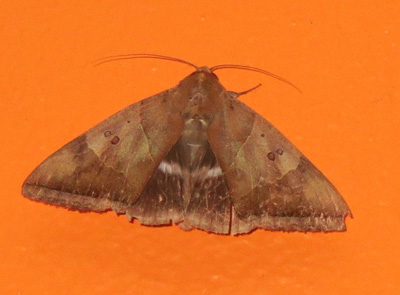
Image: Dave Hinchliffe
Observed: November 2015
Observed By: Dave Hinchliffe
Information is a little scarce on Artena convergens. Wikipedia is unusually reticent and it doesn’t seem to have been given a common name, poor thing. It’s quite a pretty moth as well, subtle colours, but attractive. Anyway it’s a moth of the Noctuidae family that has been spotted on Koh Chang, more specifically on my kitchen wall.
Artena Convergens Wikipedia
Blue-Banded Bee (anthophorid genus amegilla)
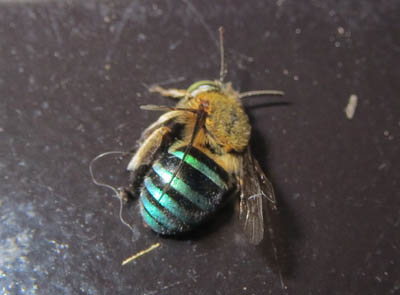
Image: Dave Hinchliffe
Last Observed: November 2015
Observed By: Dave Hinchliffe
The blue-banded be is a bee, with blue bands. In fact it’s a dead ringer for the yellow and black honey bee that you’re probably more familiar with except for the colour variation. And it doesn’t make honey.
It is a vital insect to agriculture and also to natural plant pollination – particularly in Australia – because it practises a very efficient form of pollination know as buzz pollination.
The blue-banded bee can sting but is less agressive than other species of bee and they are solitary dwellers.
Blue-banded bee Wikipedia
Reticulated Python – Python reticulatus
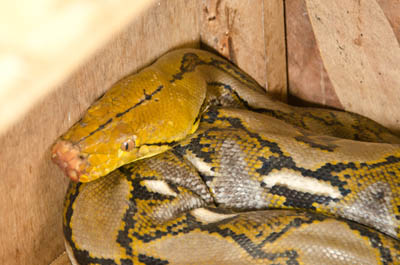
Image David Vinot
Last Observed: February 2015
Observed By: David Vinot, Stian Giordano Dahler
The reticulated python is the longest snake on earth. Another Koh Chang animal record. The largest example ever measured was a huge 6.95 metres, although there are many unconfirmed reports of much larger specimens (in fact I’ve seen a picture of one on Koh Chang that looked way longer than that).
They are non-venomous, catching their prey through winding their powerful bodies around them and literally squeezing the life out of them. Although there are plenty of anecdotal stories about them attacking humans there is little evidence and they aren’t considered to be areal threat to people. They may go for very long periods without feeding and conserve energy.
They are named after the net-like reticulated pattern of light and dark colouration. This is actually a very effective form of camouflage.
Reticulated Python Wikipedia
Image Copyright Stian Giordano Dahler
Oriental Garden Lizard – Calotes versicolor
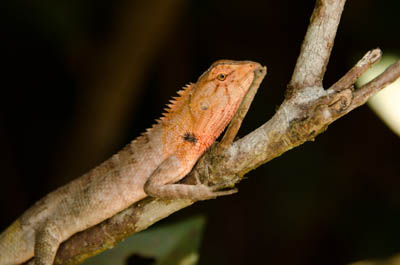
Image: David Vinot
Last Observed: November 2015
Observed By: David Vinot, Heli Pohjolainen
The oriental garden lizard is an insect-eating lizard that is common on Koh Chang.
Their coloration is very variable and males get a reddish/pink marking around the throat during mating season.
They grow up to 37cm in length including the tail and sport two distinct sets of spines as a crest on their neck and back.
Oriental garden lizard Wikipedia
Image Copyright Heli Pohjolainen
Olive Tree Skink – Dasia olivacea
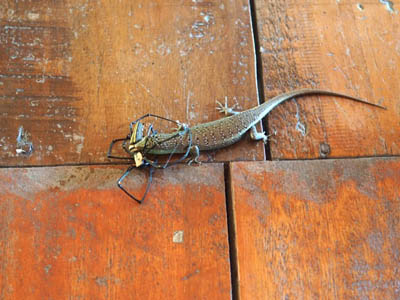
Image: David Vinot
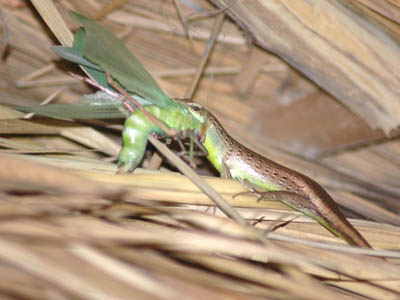
Image: David Vinot
Last Observed: February 2015
Observed By: David Vinot
As can be see from the pictures the olive tree skink is a hungry creature and feeds voraciously on live insect prey.
They live in tropical environments in Southeast Asia below 15 degrees north. Here in Koh Chang we are 12 degrees north.
Olive tree skink Wikipedia
Monocled Cobra (Naja kaouthia)
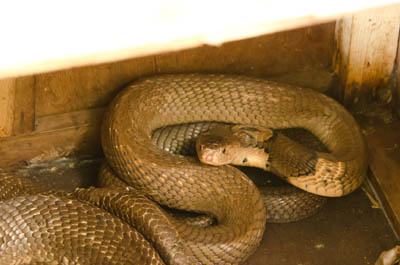
Image: David Vinot
Last Observed: February 2015
Observed By: David Vinot
The monocled or monocellate cobra is a snake with a widesoread distribution across South and Southeast Asia. It has various colorations but is characterised by a black spot on either side of the underside of its hood. They can reach a length of 1.5 Metres.
They can adapt to a variety of habitats but generally prefer a habitat with proximity to water such as mangroves or paddys fields.
IT IS VERY POISONOUS. The monocled cobra causes the most snake related fatalities in Thailand.
Monocled Cobra Wikipedia
Hawksbill Sea Turtle (Chelonia mydas)
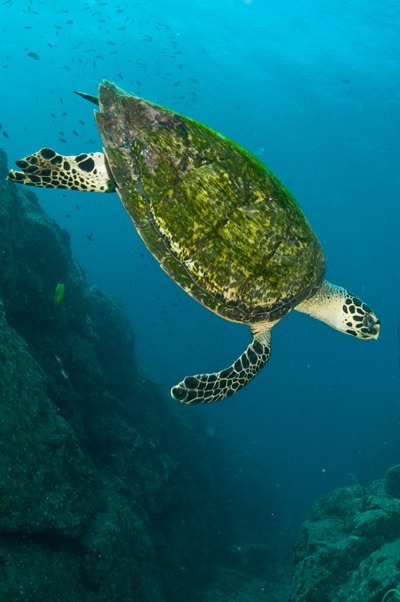
Image Copyright Jonathan Milnes
Last Observed: February 2010
Observed By: Jonathan Milnes
The hawksbill sea turtle is a large sea turtle that inhabits tropical oceans all around the world. It is listed as endangered and in most countries it is illegal to collect, harm or kill them. Not that you’d want to – they are peaceful creatures and swimming with one is a rare privilege.
Like most turtles the hawksbill turtle migrates very long distance between feeding grounds and hatching beaches, which they are able to relocate with uncanny precision. They can live for up to 80 years.
Hawksbill Sea Turtle Wikipedia
Image Copyright Jonathan Milnes
Image Copyright Jonathan Milnes
Image Copyright Jonathan Milnes
Copperhead Rat Snake (Canthosaura armata)
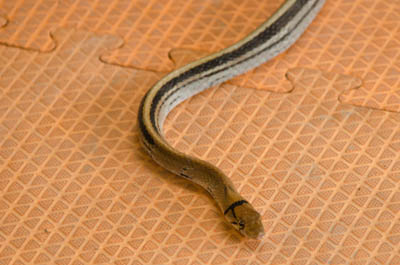
Image David Vinot
Last Observed: February 2015
Observed By: David Vinot
The Copperhead Rat Snake, A.K.A. Radiated ratsnake and Copper-Headed Trinket Snake is a nonvenomous snake from the colubrid family.
It has distinctive lengthwise black and beige markings.
Copperhead Rat Snake Wikipedia
Common Sun Skink (Eutropis multifasciata)
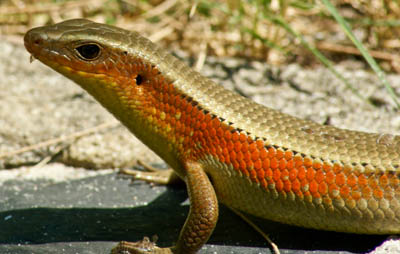
Image: David Vinot
Last Observed: November 2015
Observed By: Rinske Hackmann, David Vinot
This skink is characterised by its brightly coloured side markings. It has loads of names as well; Easrt Indian Brown Mabuya, Many-Loned Sun Skink, Many-Striped Skink and Golden Skink. It is found all over South, Southeast and East Asia
Common Sun Skink Wikipedia





